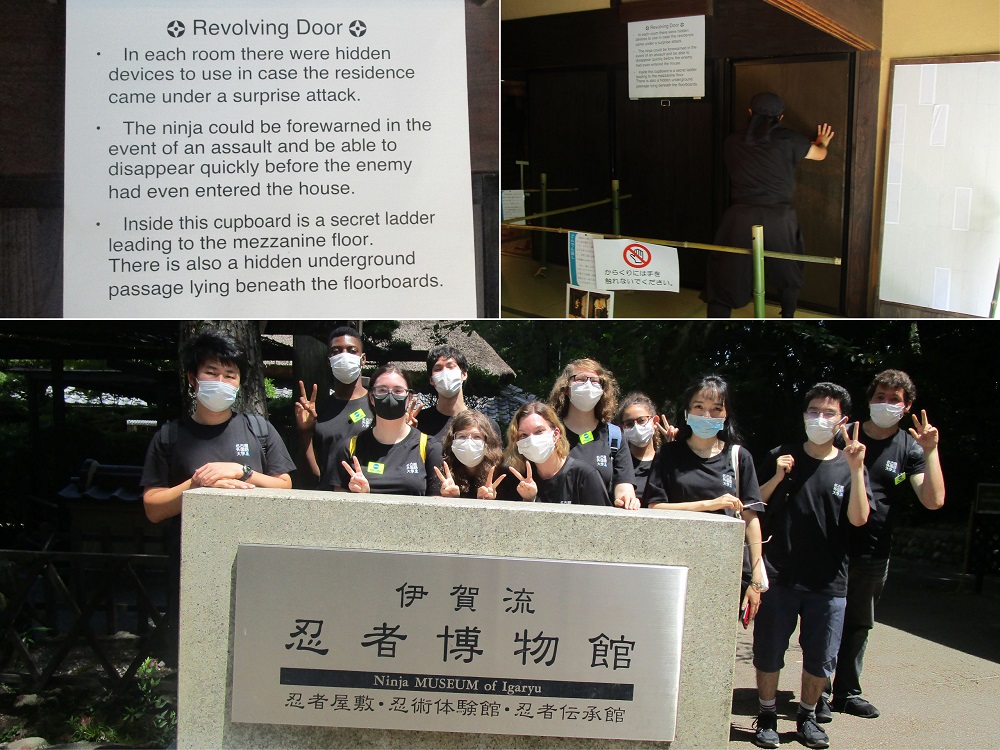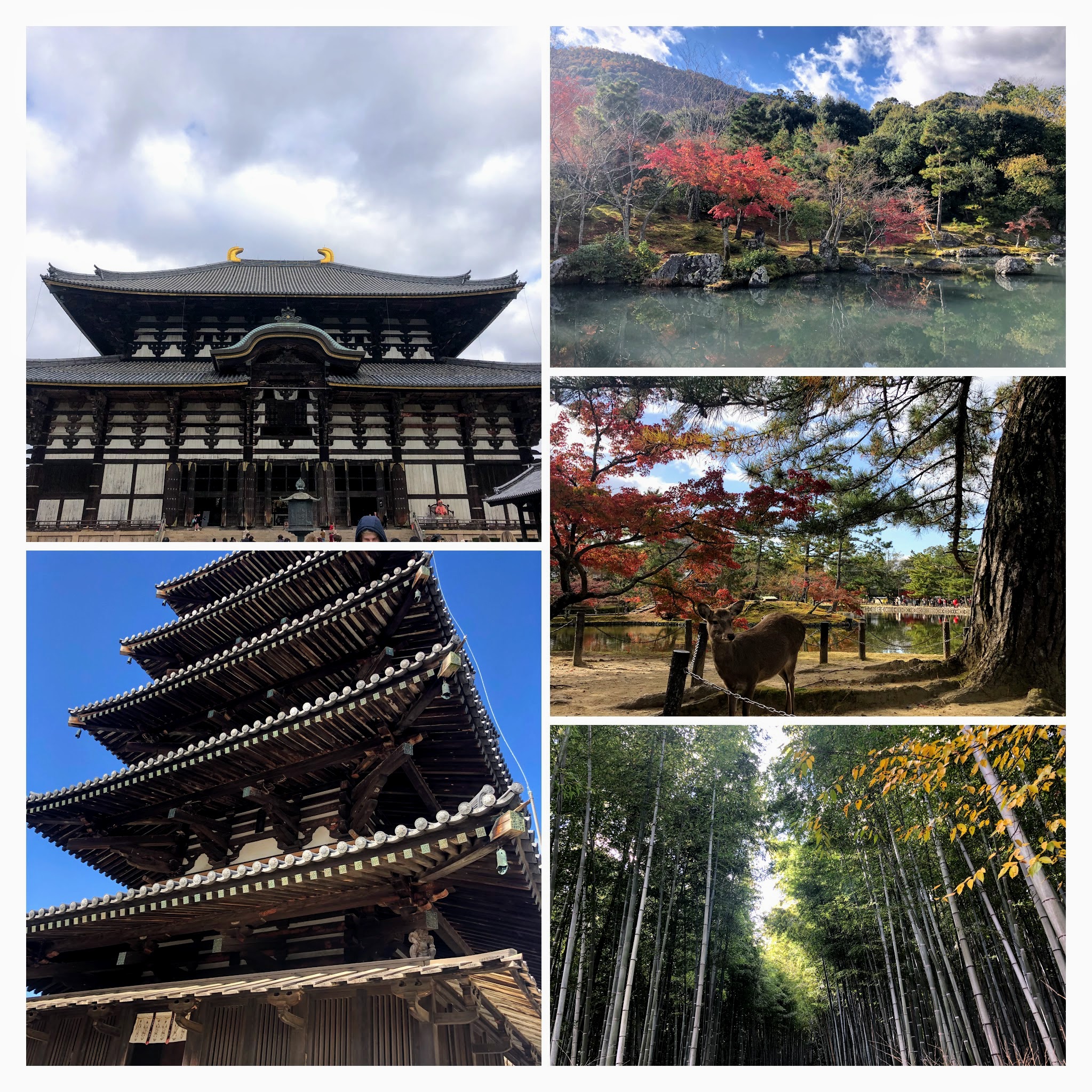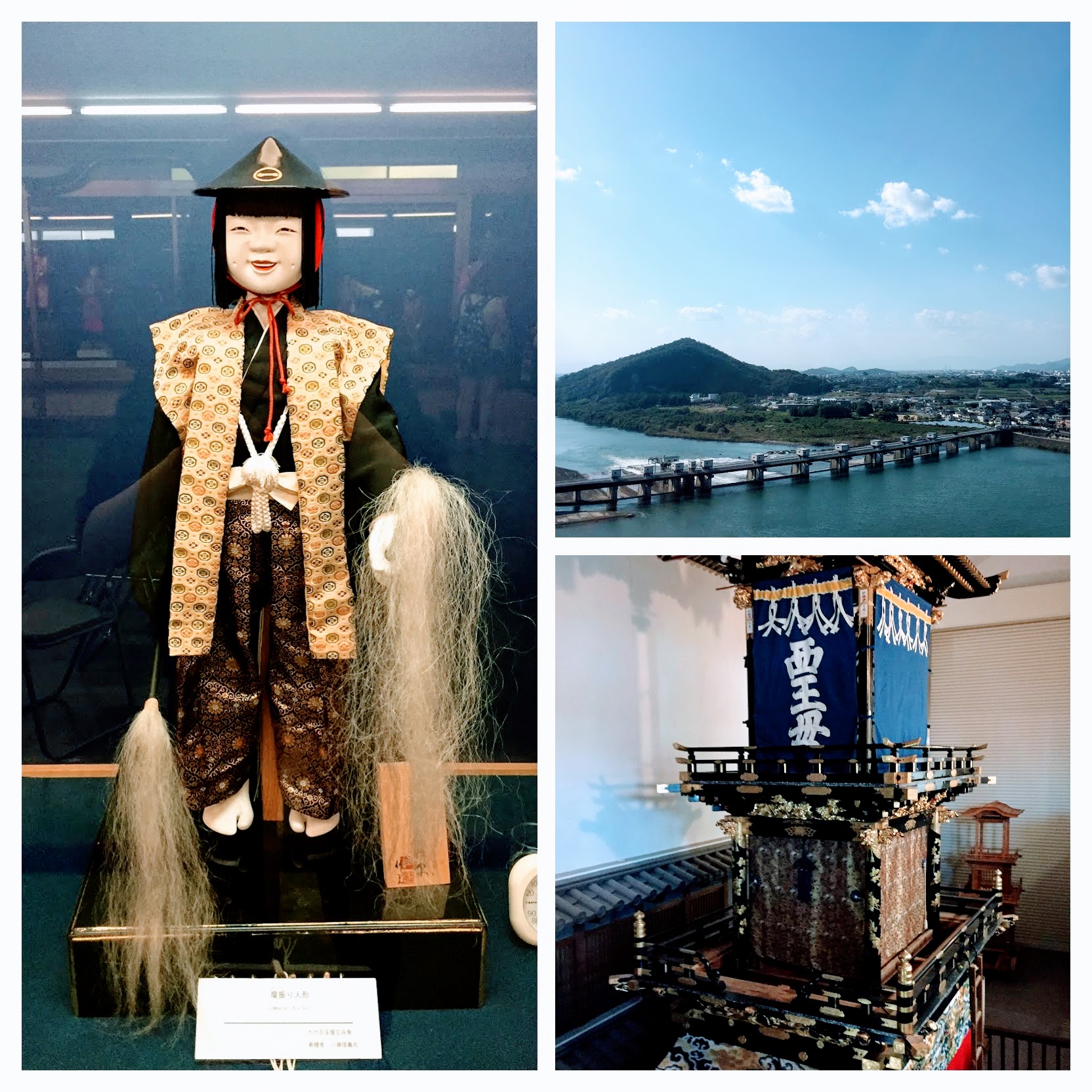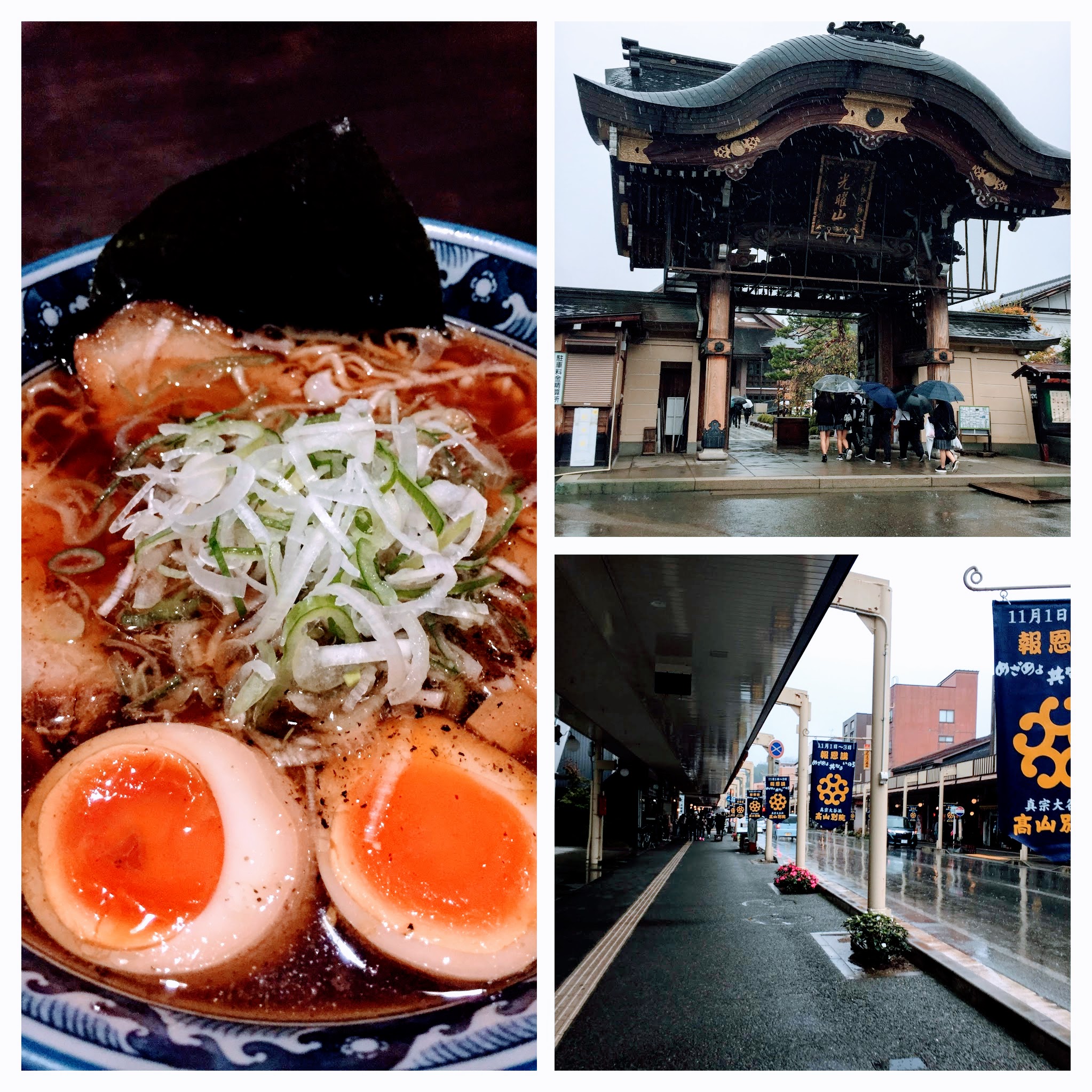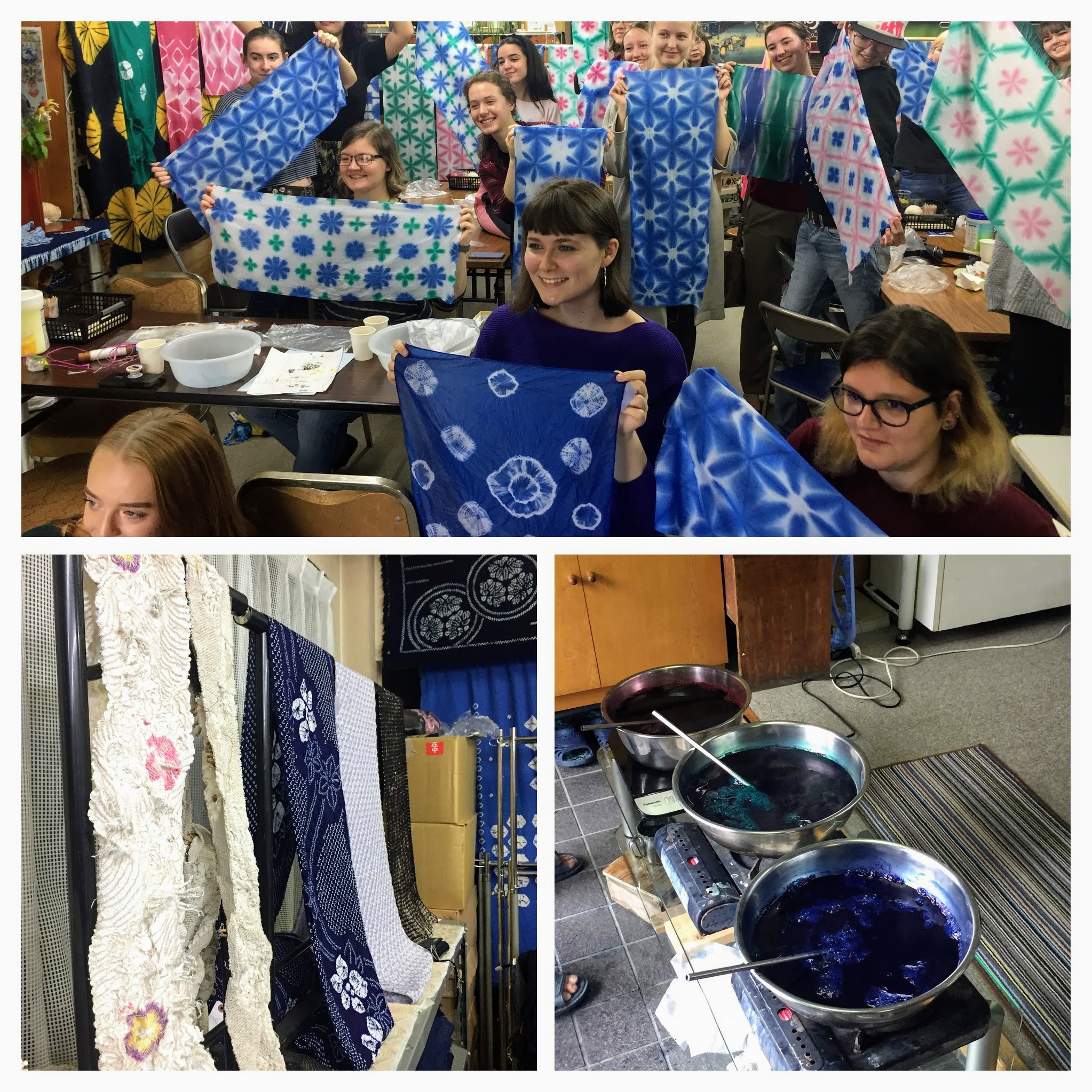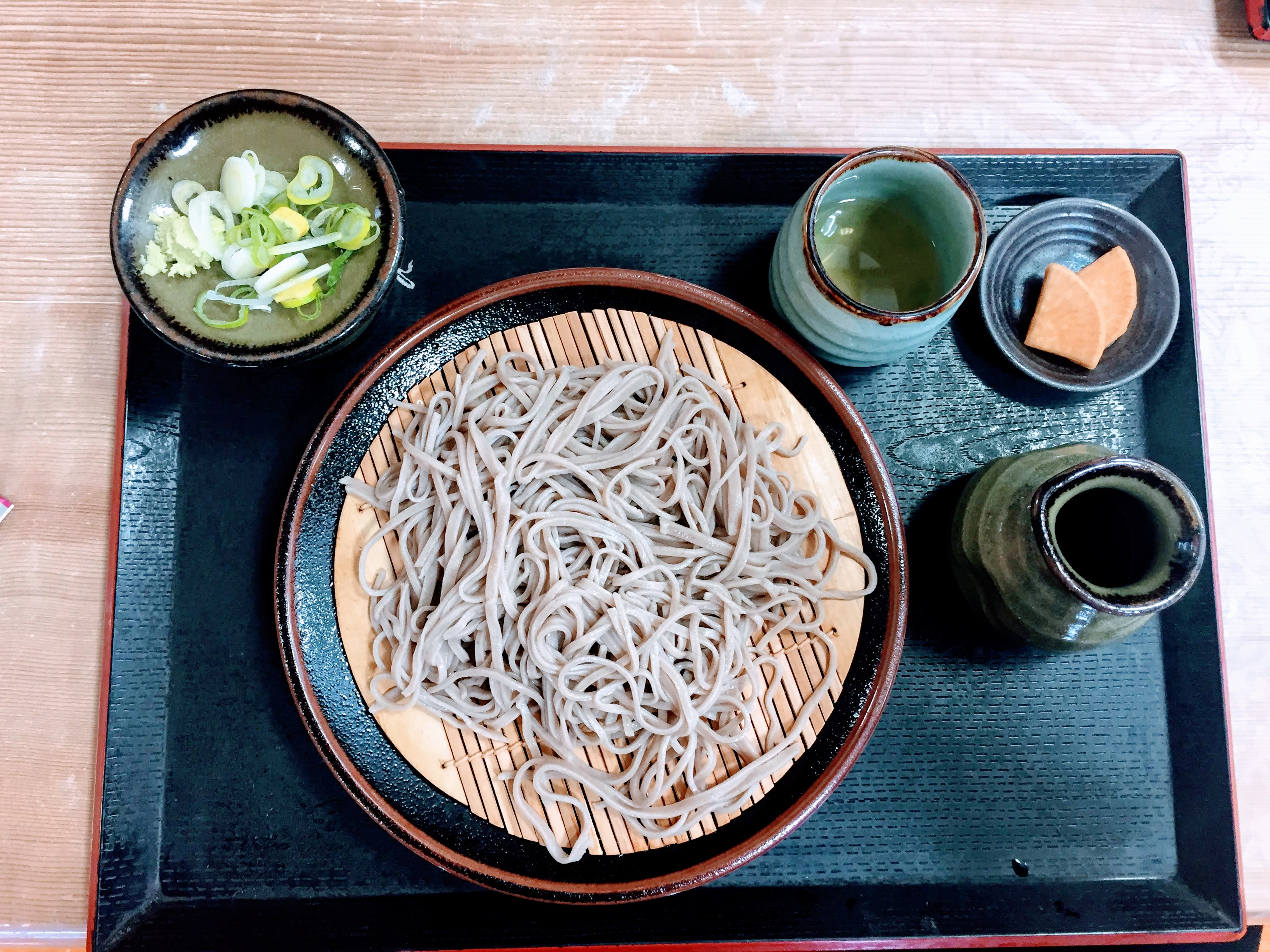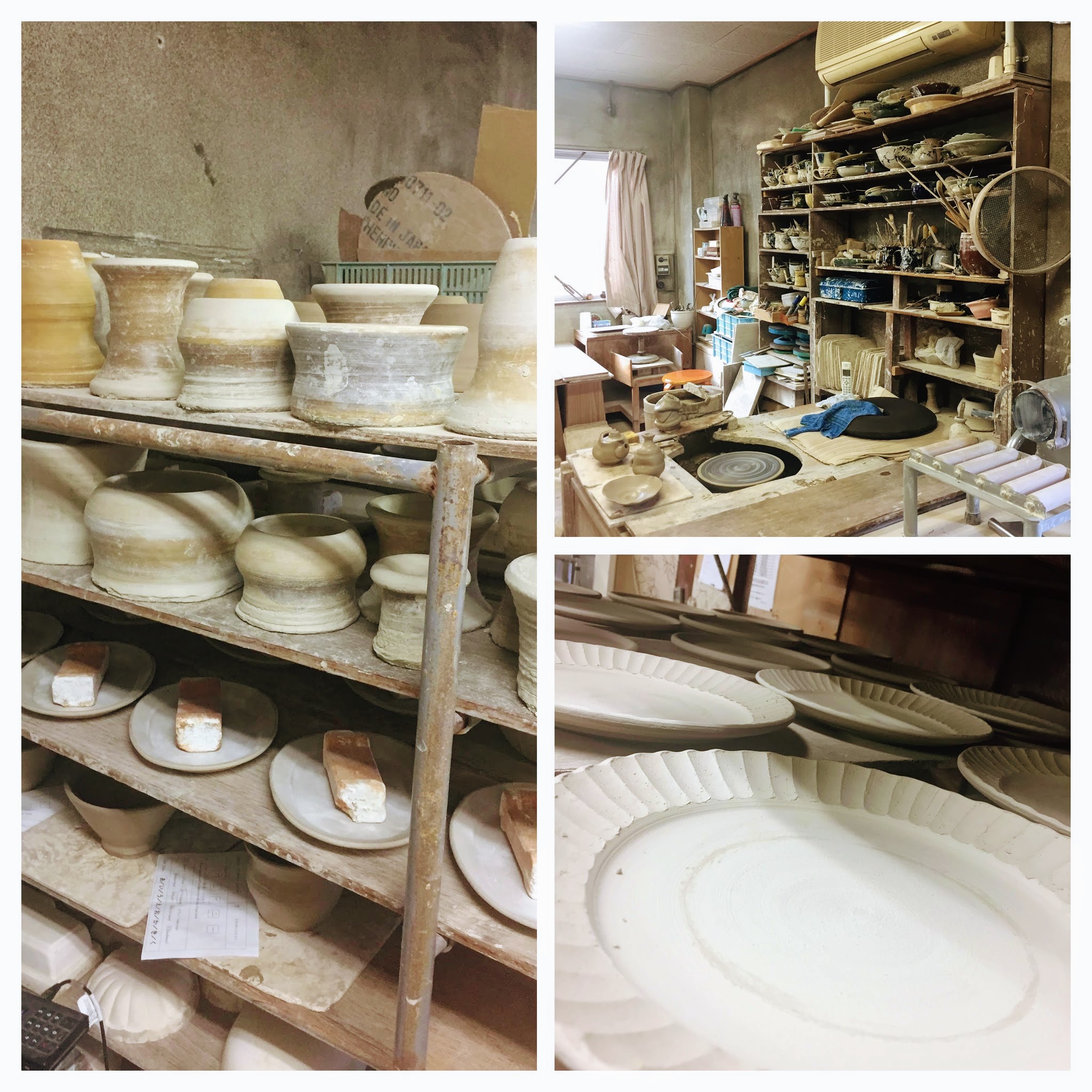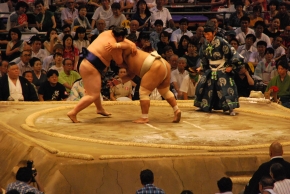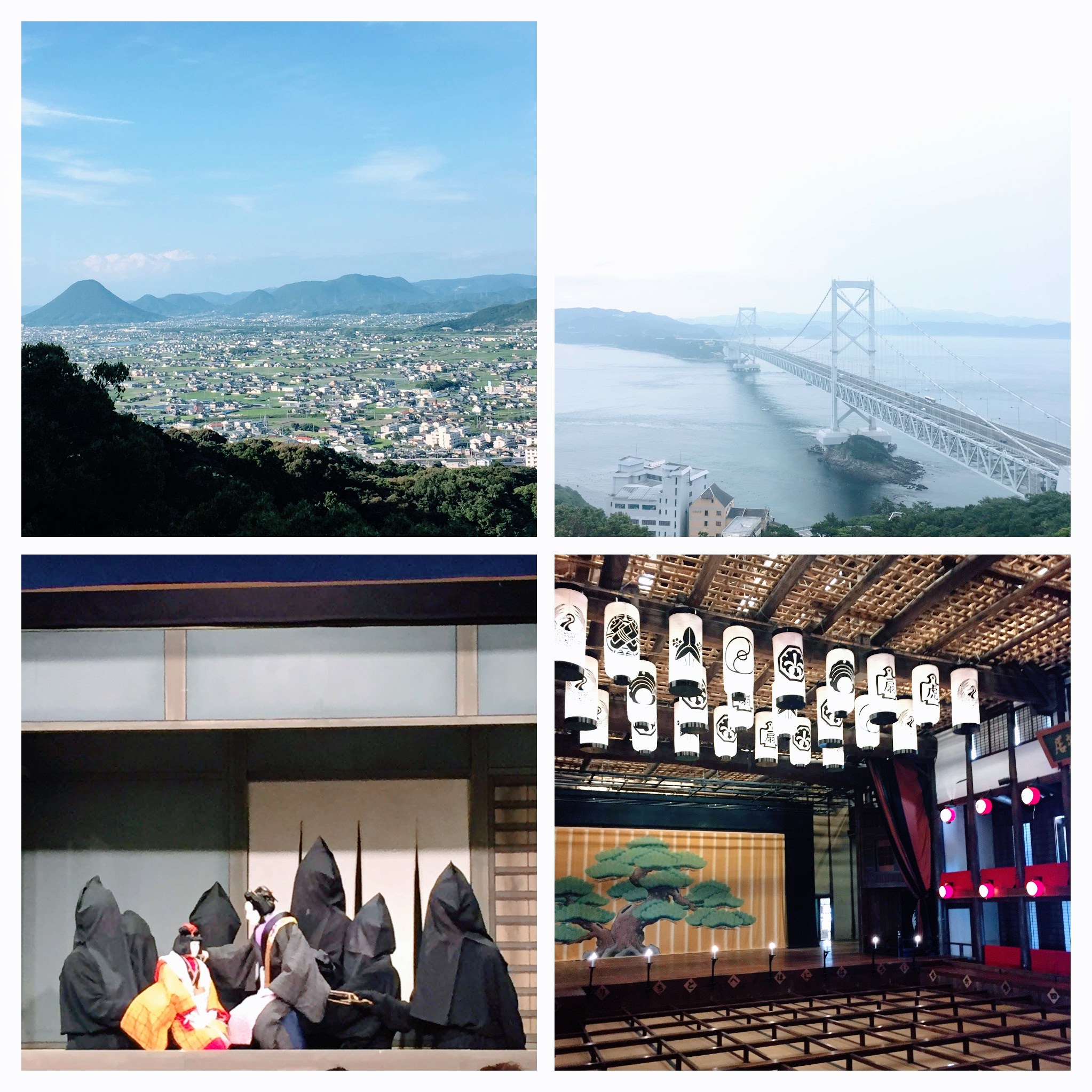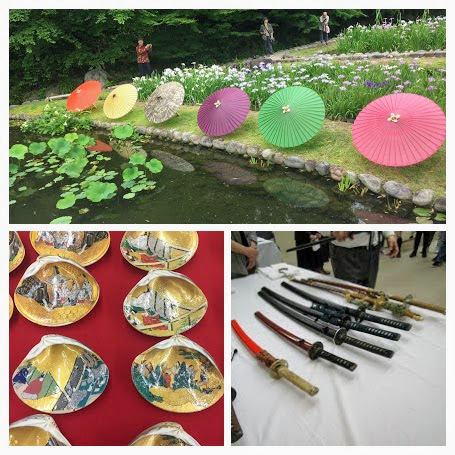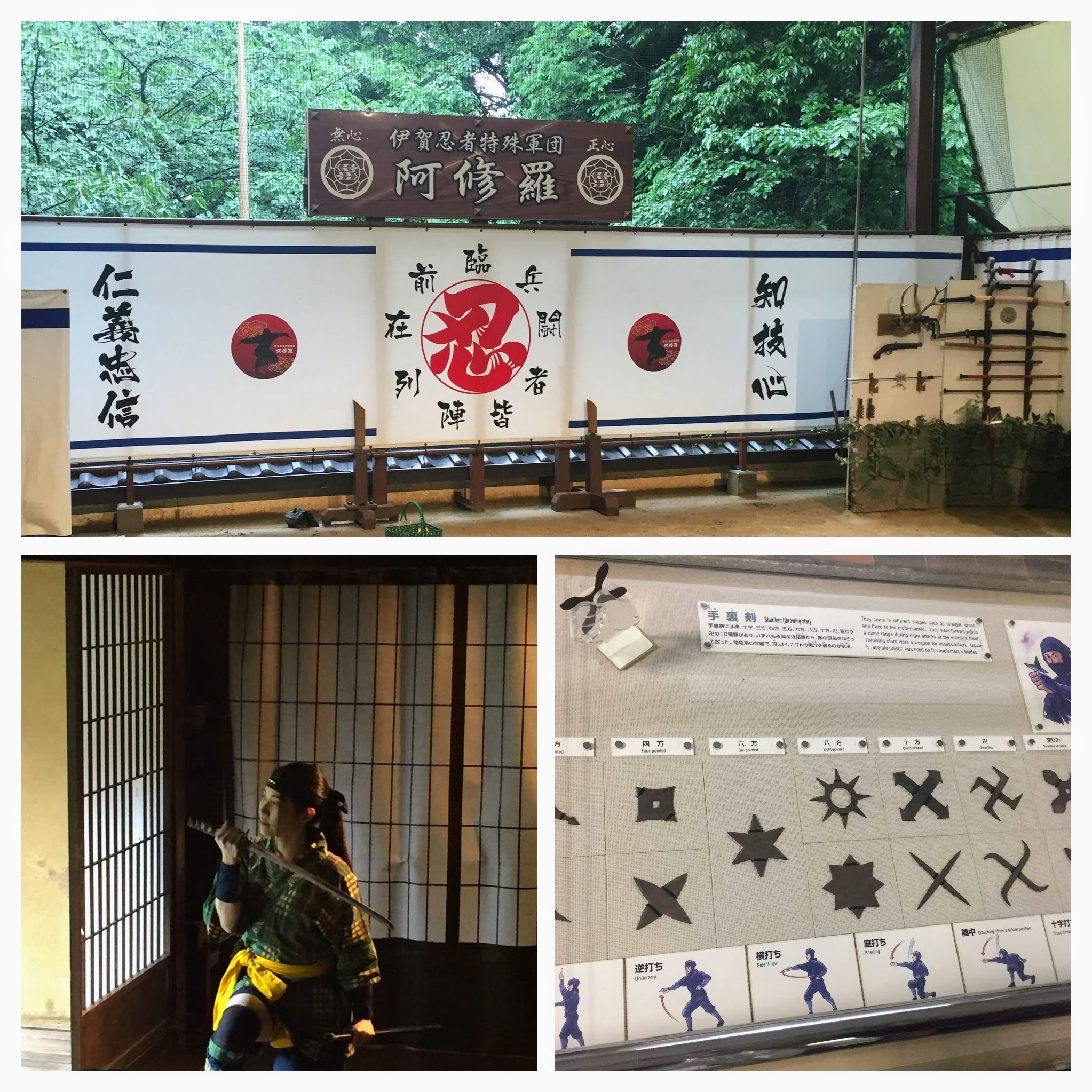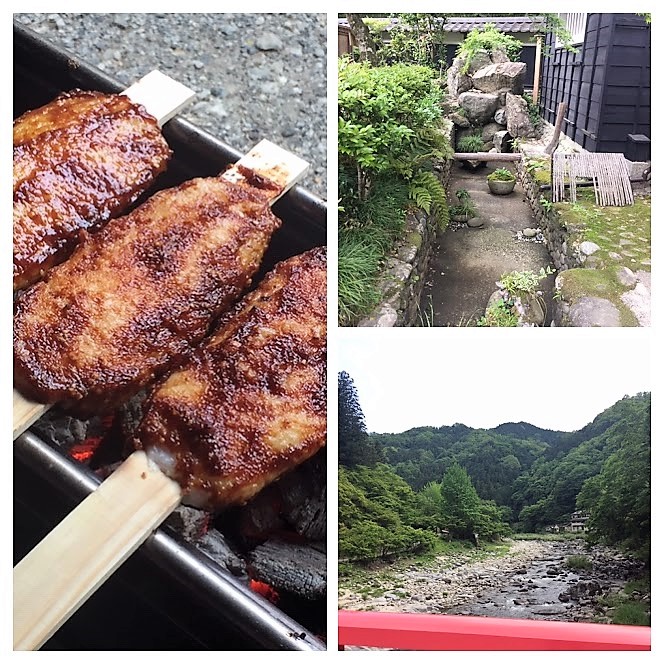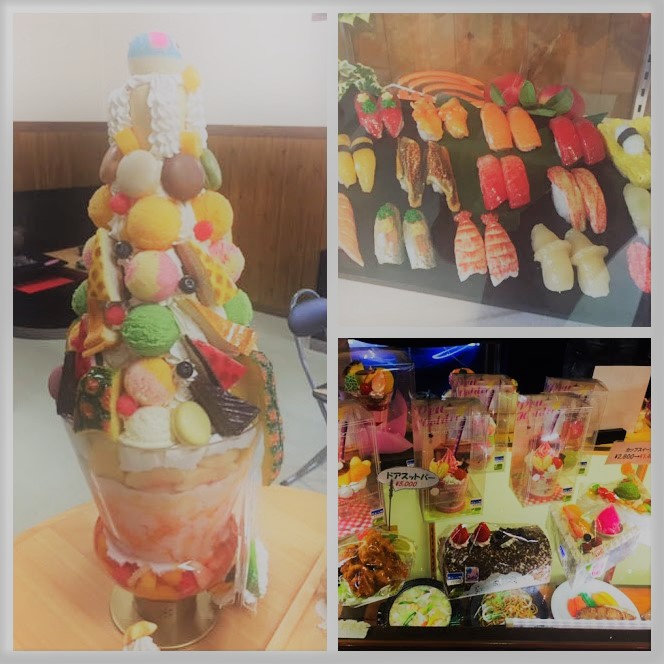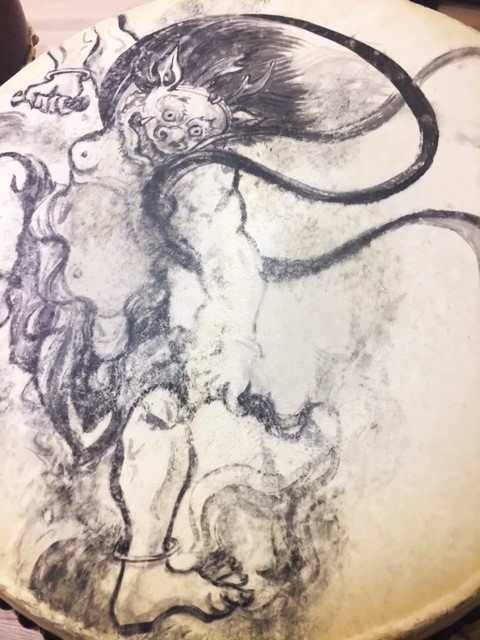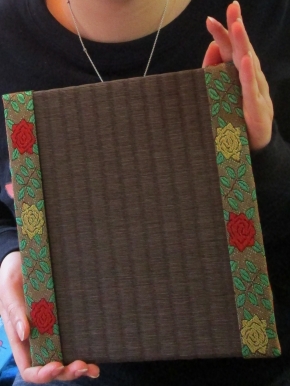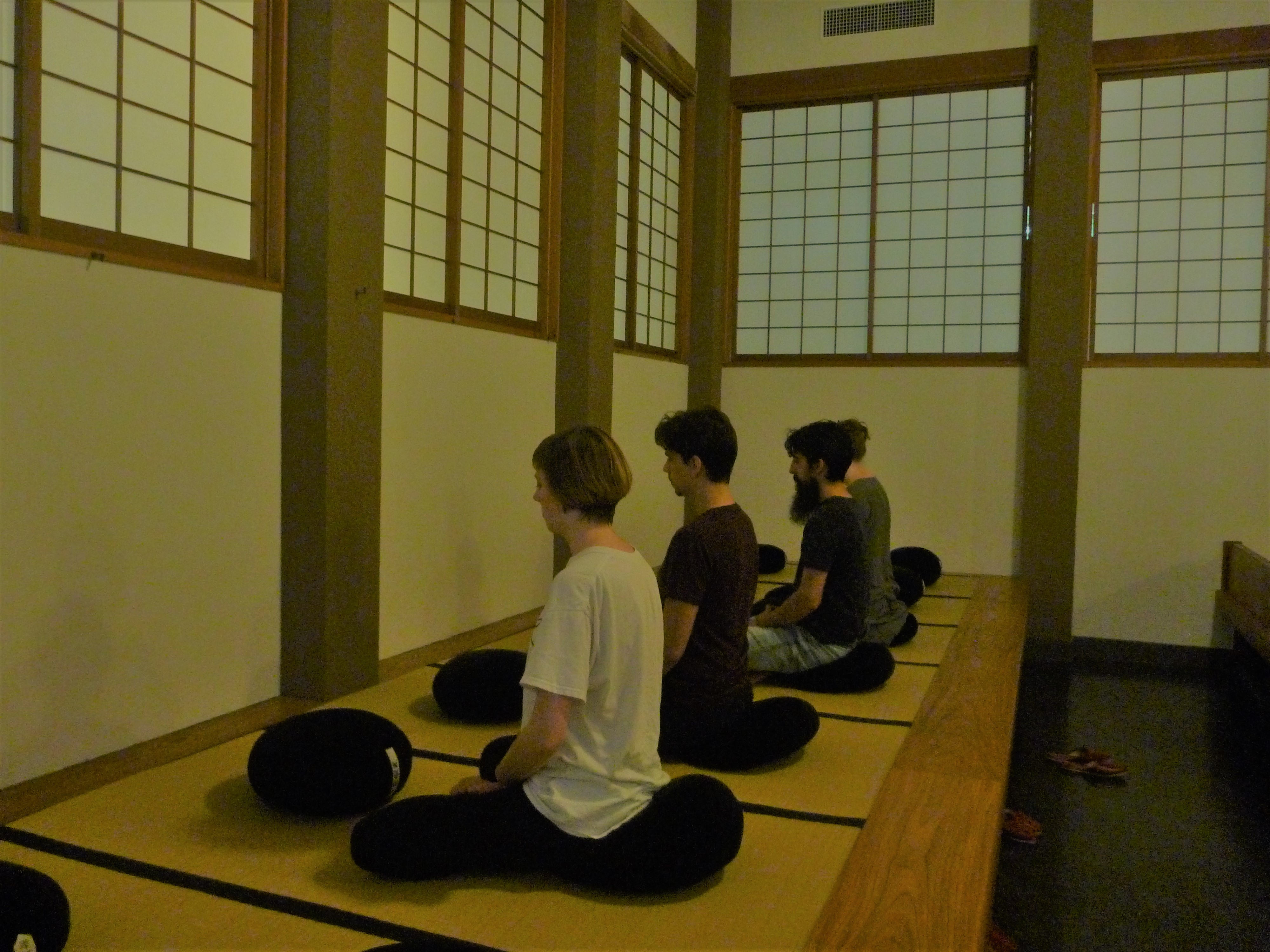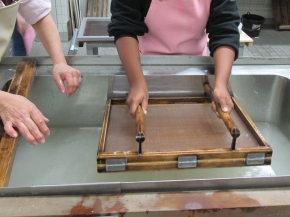Japanese Culture Practicum
Our weekly Japanese Culture Practicum aims at familiarizing students in Global Japan Program with the culture, history and traditions of the Tokai region as well as Japan at large. Learn here about our latest excursions, workshops and guest lectures.
Ninja Museum Tour in Iga (July 22, 2020)
Unfortunately, due to the COVID-19, we could only carry out our Japanese Culture Practicum program once this year.
We took measures against COVID-19 and went to the Ninja Museum of Igraryu located in Iga, Mie prefecture.
We visited the ninja’s mansion and there we could see the tricks hidden inside the mansion such as the revolving door which ninjas used in order to hide from intruders. After visiting the mansion, we saw an actual ninja performance.
The ninja demonstrated how to throw shuriken which is a traditional Japanese concealed weapon.
We took measures against COVID-19 and went to the Ninja Museum of Igraryu located in Iga, Mie prefecture.
We visited the ninja’s mansion and there we could see the tricks hidden inside the mansion such as the revolving door which ninjas used in order to hide from intruders. After visiting the mansion, we saw an actual ninja performance.
The ninja demonstrated how to throw shuriken which is a traditional Japanese concealed weapon.
Mochi Rice Cake Making (December 13, 2019)
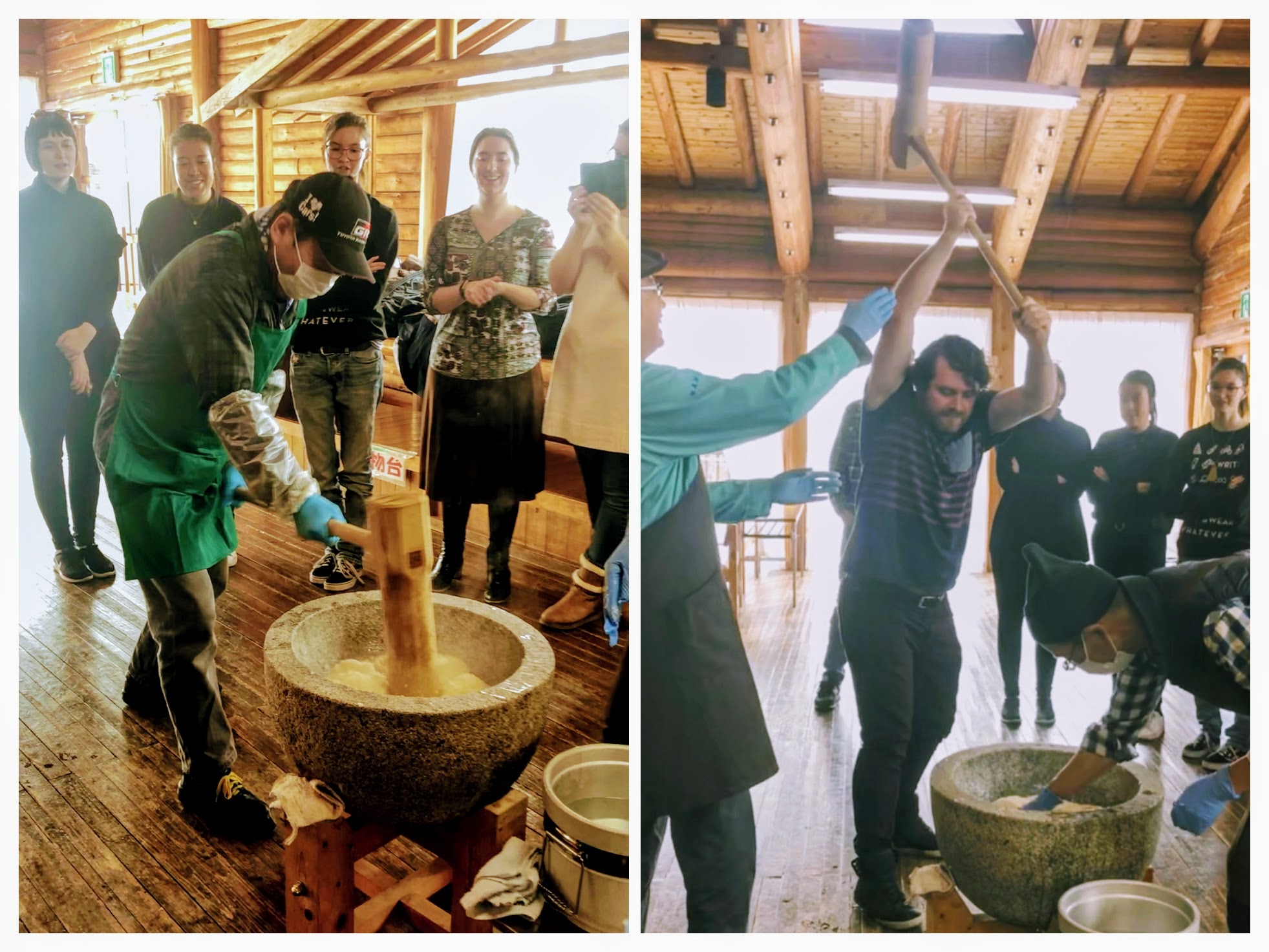
Again here we are at the end of the year (and fall semester) and what a better way to conclude our excursions program than making Mochi Rice Cake?
In Japan with the New Year drawing near, people traditionally pounded steamed rice to make New Year's rice cakes.
Each one of us tried to pound the rice with the heavy wooden pestle, called Kine in Japanese, inside the stone mortar, Usu. It's a work that requires strength and precision and it has to be done before the steamed rice cool down.
When finally the Mochi was ready we could taste it with four different dressings: Daikonoroshi (grated daikon radish) and soy sauce, Adzuki (red mung beans), Satōjōyu (soy sauce and sugar) and Kinako (roasted soybean flour).
In Japan with the New Year drawing near, people traditionally pounded steamed rice to make New Year's rice cakes.
Each one of us tried to pound the rice with the heavy wooden pestle, called Kine in Japanese, inside the stone mortar, Usu. It's a work that requires strength and precision and it has to be done before the steamed rice cool down.
When finally the Mochi was ready we could taste it with four different dressings: Daikonoroshi (grated daikon radish) and soy sauce, Adzuki (red mung beans), Satōjōyu (soy sauce and sugar) and Kinako (roasted soybean flour).
Tsumago-Juku Walking Trip (December 6, 2019)
Tsumago-Juku is a small town located in the mountainous Nagano Prefecture, close to the border with Gifu.
Traditionally it served as a place to rest for climbers and hikers.
Thanks to its small picturesque streets with traditional houses and the surroundings of beautiful mountain and paddy filed views, the town has been increasingly popular with visitors from Japan and overseas alike.
Traditionally it served as a place to rest for climbers and hikers.
Thanks to its small picturesque streets with traditional houses and the surroundings of beautiful mountain and paddy filed views, the town has been increasingly popular with visitors from Japan and overseas alike.
Kyoto and Nara Overnight Excursion (November 29-30, 2019)
This year overnight excursion took us to Kyoto and Nara.
We started our trip with Tenryuji temple located in Arashiyama, a scenic area at the foot of the mountains on the western outskirts of Kyoto.
The temple's major building's (Hatto) paneled ceiling is adorned with a large cloud dragon rendered in the happo nirami style, in which the dragon appears to be looking directly at the viewer from wherever it is seen in the Hatto.
Then we reached Toei Kyoto Studio Park a theme park and film set modeled after the Edo period located in Kyoto where we could enjoy many attractions like Ninja Mystery House, Haunted House a 3D Maze and more.
Our last destination of the day was Gion, Kyoto’s geisha district, where we assisted to seven Japan’s traditional performing arts in ‘digest’ form all on one stage at Gion Corner.
We then moved to Nara, where we had dinner and stayed at a ryokan, or a traditional Japanese inn. Our second day started with a visit to Todaiji temple, with the famous Great Buddha of Nara, Japan's largest Buddhist statue. Another draw to this ancient town are the ubiquitous deer - probably the world's cutest deities! Our next and final stop was the town of Ikaruga (also in Nara Prefecture), where we went to admire one more of Nara's many World Heritage sites, the Horyuji Temple.
Naturally, both places deserve much more time than just two days, but our trip was definitely an amazing cultural experience and an encouragement for future visits!
We started our trip with Tenryuji temple located in Arashiyama, a scenic area at the foot of the mountains on the western outskirts of Kyoto.
The temple's major building's (Hatto) paneled ceiling is adorned with a large cloud dragon rendered in the happo nirami style, in which the dragon appears to be looking directly at the viewer from wherever it is seen in the Hatto.
Then we reached Toei Kyoto Studio Park a theme park and film set modeled after the Edo period located in Kyoto where we could enjoy many attractions like Ninja Mystery House, Haunted House a 3D Maze and more.
Our last destination of the day was Gion, Kyoto’s geisha district, where we assisted to seven Japan’s traditional performing arts in ‘digest’ form all on one stage at Gion Corner.
We then moved to Nara, where we had dinner and stayed at a ryokan, or a traditional Japanese inn. Our second day started with a visit to Todaiji temple, with the famous Great Buddha of Nara, Japan's largest Buddhist statue. Another draw to this ancient town are the ubiquitous deer - probably the world's cutest deities! Our next and final stop was the town of Ikaruga (also in Nara Prefecture), where we went to admire one more of Nara's many World Heritage sites, the Horyuji Temple.
Naturally, both places deserve much more time than just two days, but our trip was definitely an amazing cultural experience and an encouragement for future visits!
Tea Ceremony Experience (November 15, 2019)
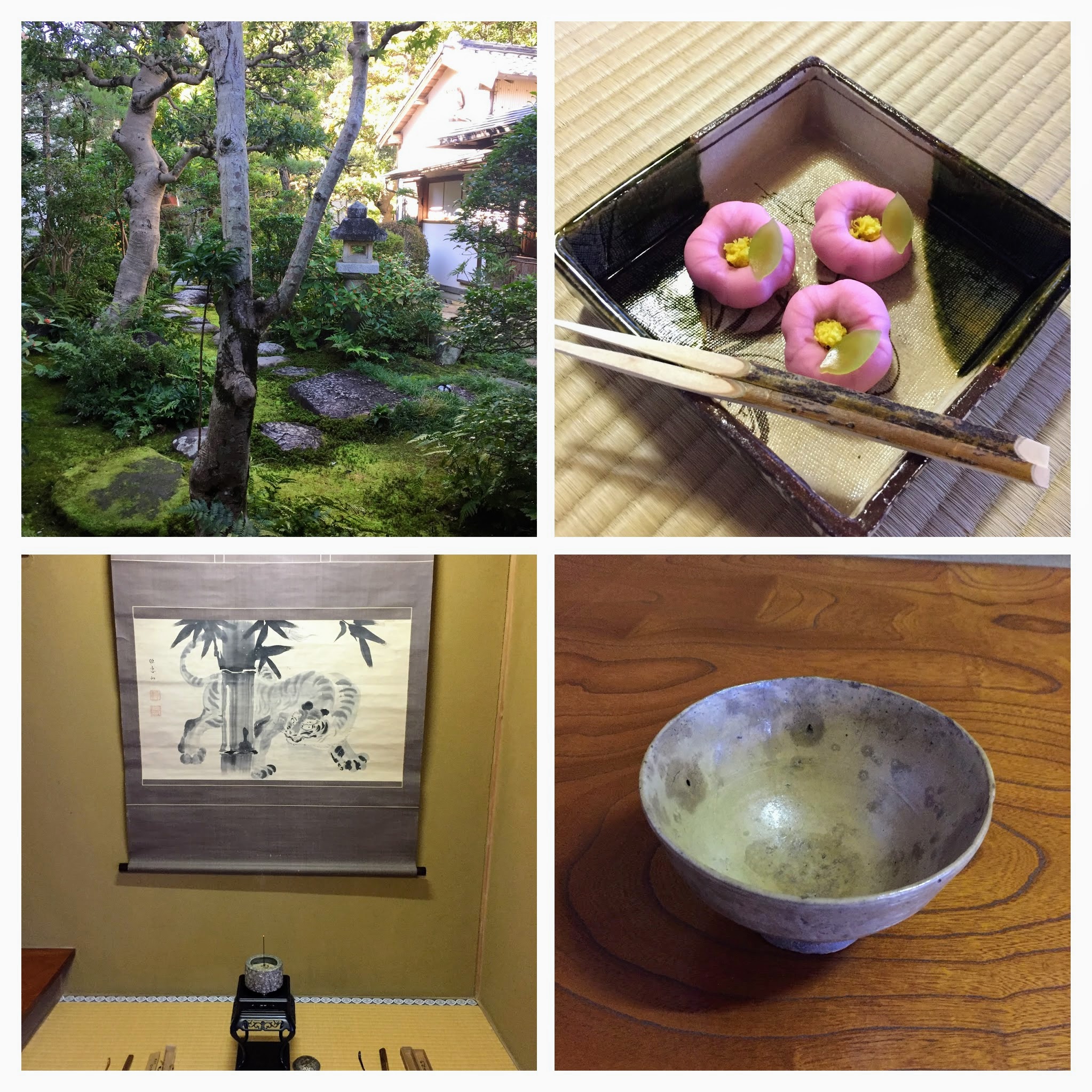
Tea Ceremony (Sadō) is the traditional Japanese way of drinking matcha (powered green tea) following set rules and this Friday we went to visit Rinzai-ji temple, Buddhist temple belonging to the Myōshin-ji branch of the Rinzai school of Japanese Zen, in Shizuoka prefecture, to enjoy this practice. There we had the chance to learn about the history of how tea ceremony developed until nowadays. Originally tea seeds was brought in Japan by the monk founder of Rinzai Buddhism, Eisai around 1191 A.D. and the final tea ceremony practice, we know now, was perfected by Sen no Rikyu in the sixteenth Century, later standardized by different schools of tea.
Tea Ceremony has a profound meaning. It involves not only the manners of tea but also the Zen spirit, wabi (a kind of austerity), rationality, consideration of others - our mental attitude towards life.
Tea Ceremony has a profound meaning. It involves not only the manners of tea but also the Zen spirit, wabi (a kind of austerity), rationality, consideration of others - our mental attitude towards life.
Matcha Museum and Iwase Bunko Library (November 8, 2019)
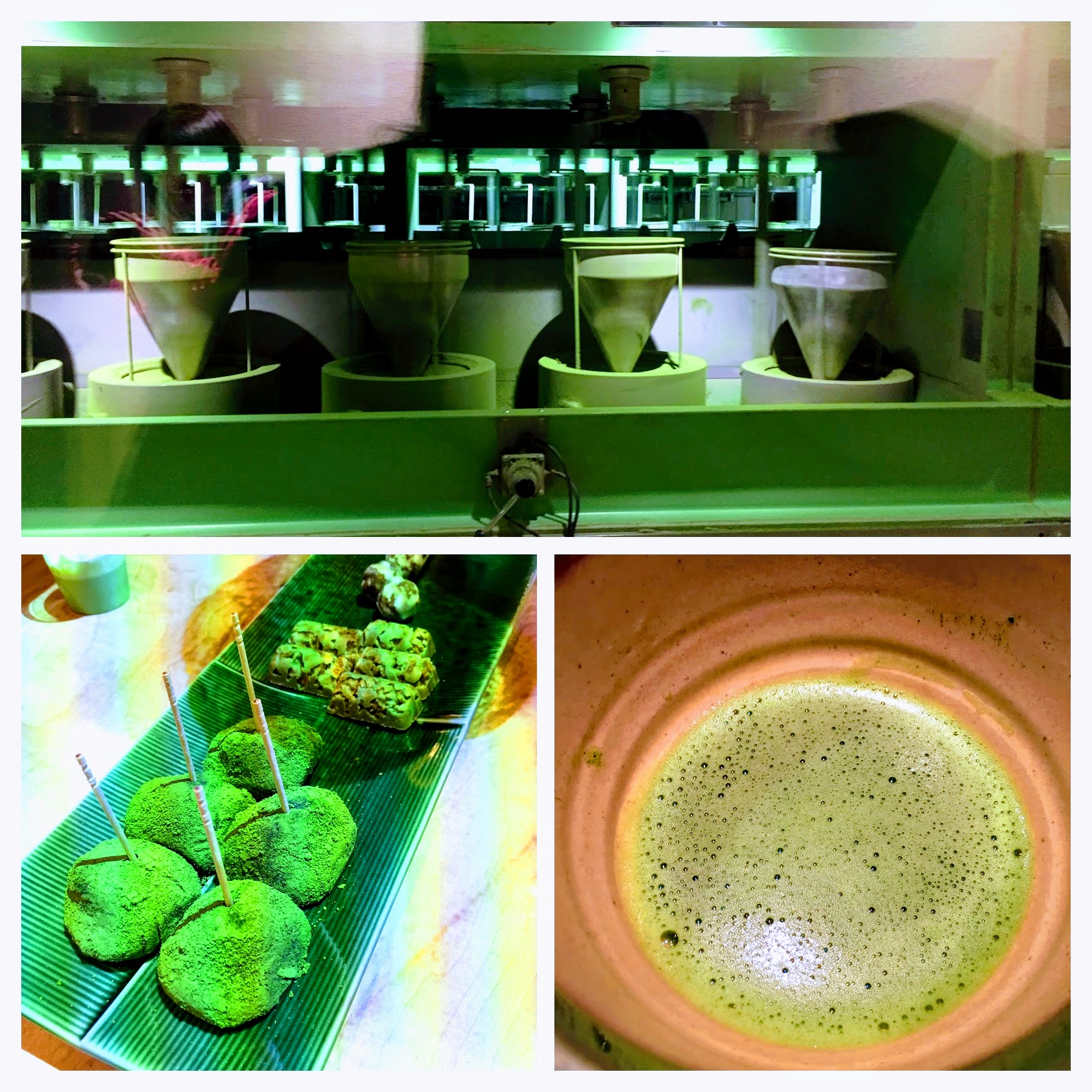
For this week excursion we went to a city called Nishio, very famous for the production of Matcha. There we visited the Matcha factory where we could learn about Matcha making process and try to be tea taster for one day, drinking, smelling, touching, observing different kind of tea and trying to understand the characteristics of each variety. At the end of the visit we also could taste Matcha tea and three delicious different kind of sweets made with Matcha powder.
Our next destination was Iwase Bunko Library, established as a private library in Nishio city by Yasuke Iwase, a wealthy merchant who used his own funds and opened IBL in 1908. There we had the chance not only to see but also to leaf through one of the copied versions of Genji Monogatari (Tales of Genji) from about 200 years ago.
Our next destination was Iwase Bunko Library, established as a private library in Nishio city by Yasuke Iwase, a wealthy merchant who used his own funds and opened IBL in 1908. There we had the chance not only to see but also to leaf through one of the copied versions of Genji Monogatari (Tales of Genji) from about 200 years ago.
Inuyama Castle and Karakuri Mechanical Dolls Museum (November 1, 2019)
Inuyama Castle is known as the oldest castle in Japan preserved largely in its original form. The castle is much smaller than those in Himeji, Osaka or Nagoya, but is a beautiful example of Japanese medieval architecture. It is also one of the best places in Aichi Prefecture to enjoy the hanami - cherry blossom viewing in spring.
Karakuri mechanical dolls were first constructed in Japan in the Edo period. There were two types to the karakuri - the smaller zashiki-karakuri used indoors to entertain guests, and the matsuri-karakuri used on top of great floats during festivals (one can admire the ingenuity of their creators during the Inuyama Festival held every year in April). It is believed that the karakuri were predecessors of the modern-day robots, in whose production Japan is the world leader.
Karakuri mechanical dolls were first constructed in Japan in the Edo period. There were two types to the karakuri - the smaller zashiki-karakuri used indoors to entertain guests, and the matsuri-karakuri used on top of great floats during festivals (one can admire the ingenuity of their creators during the Inuyama Festival held every year in April). It is believed that the karakuri were predecessors of the modern-day robots, in whose production Japan is the world leader.
Hida Takayama Walking Tour (October 25, 2019)
On October 25 we visited two beautiful old towns in the Hida region in the mountainous part of Gifu Prefecture, Takayama. This picturesque little town has recently increased its popularity as a tourist destination, as it served as the location for the widely popular animated film Kimi no na wa? (Your name?)
Arimatsu Tie-Dying (October 18, 2019)
Arimatsu is the name of a district located right here in Nagoya. Over the centuries it has become synonymous with "tie-dying," a technique of dying textiles whereby parts of the fabric are literally tied (with strings etc.) to create unique design patterns. This technique started around the same time as the construction of Nagoya Castle (completed in 1612) and was initially used to dye kimonos. It is now used to dye both traditional Japanese and Western clothing alike as well as other items which use textile elements such as those used in interior design. For this week's Culture Practicum we visited Arimatsu to take part in a tie-dying workshop. One of the most exciting features about this method of design is that you can never get two identical pieces.
As an extra perk to the excursion, we were able to visit the Arimatsu Float Museum which showcases floats (dashi) used in the Arimatsu Festival.
As an extra perk to the excursion, we were able to visit the Arimatsu Float Museum which showcases floats (dashi) used in the Arimatsu Festival.
Soba Noodle Making (October 11, 2019)
Anyone who's even remotely interested in Japanese cuisine knows the three types of noodles that make it famous: ramen, udon, and soba. For this week's Japanese Culture Practicum we went to Rassei Misato in Ena, Gifu Prefecture to make our own soba (buckwheat) noodles from scratch.
Wheat flour, buckwheat flour, some water, and some more buckwheat flour - that's all you need to make the dough. After your dough has gained the perfect texture and has been cut into thin strings, the noodles are boiled and served with soy sauce and yakumi - spring onions and wasabi. And voila, delicious!
Wheat flour, buckwheat flour, some water, and some more buckwheat flour - that's all you need to make the dough. After your dough has gained the perfect texture and has been cut into thin strings, the noodles are boiled and served with soy sauce and yakumi - spring onions and wasabi. And voila, delicious!
Pottery Making Workshop (October 4, 2019)
This week we went to the town of Seto in our very own Aichi Prefecture, famed for its beautiful ceramic tradition. Sitting at the potter's wheel, we tried to find our inner pottery artist and made cups, plates, bowls or ashtrays. We can't wait to see what our pieces look like after the pottery master has finished them in the kiln!
Tokoname Walking Tour (September 27, 2019)
This week went to a nearby town of Tokoname, famous for ceramics. Tokoname's famed Pottery Path is a popular place for walks and is also known as The Maneki-Neko Path as it hosts a wide variety of ceramic maneki-neko (“beckoning cats”) including the Giant Maneki-Neko “Tokonyan,” the 39 Devine Favour Ceramic Maneki-Neko, as well as the 11 Real Life-Looking Cats.
The Devine Favour Ceramic Maneki-Neko were manually made with affection by 39 Tokoname pottery artists. These 39 cats are amulets meant to bring prosperity.
The Real Life Looking Cats can be found near the Giant Maneki-Neko and look like living cats even when viewed from up close.
The Devine Favour Ceramic Maneki-Neko were manually made with affection by 39 Tokoname pottery artists. These 39 cats are amulets meant to bring prosperity.
The Real Life Looking Cats can be found near the Giant Maneki-Neko and look like living cats even when viewed from up close.
Ise Grand Shrine (September 20, 2019)
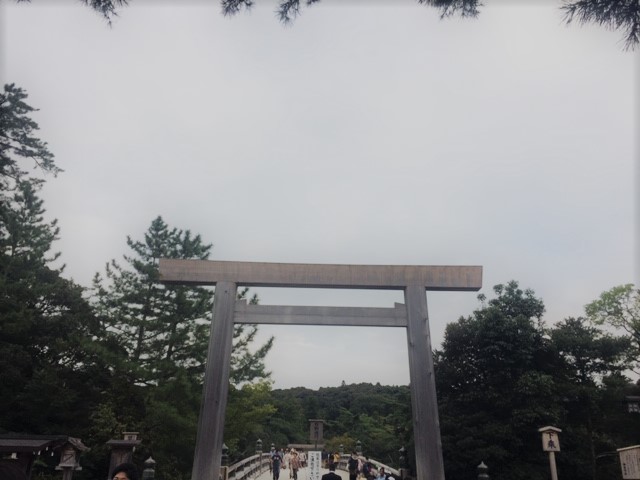
The Grand Shrine in Ise, Mie Prefecture, is one of the most important religious sites in Japan. Surrounded by beautiful scenery, the Shrine is a sublime example of Japan's Shinto tradition.
After arriving to the shrine compounds, we first saw a Kagura court dance performance with traditional prayers by Shinto priests offered for our well-being and prosperity. Afterwards, we strolled around the shrine complex admiring the beauty of tradition and nature.
A really nice way to start this new semester!
After arriving to the shrine compounds, we first saw a Kagura court dance performance with traditional prayers by Shinto priests offered for our well-being and prosperity. Afterwards, we strolled around the shrine complex admiring the beauty of tradition and nature.
A really nice way to start this new semester!
Grand Sumo Nagoya Tournament (July 19, 2019)
Sumo wrestling started as a religious rite, which is why there is a traditional significance to every aspect of the sport. Starting with the ritual shiko - stomping of the feet - to keep evil spirits underground, to washing one's mouth and hands to keep the unclean off the sacred sumo ring, there is so much more to sumo than just the wrestlers' superhuman strength, which, by the way, was why they were traditionally considered deities!
Kompira Shrine, Kanamaruza Kabuki Theater, Awa Jurobe Puppet Theater and Naruto Whirlpool (July 12-13, 2019)
For this semester overnight trip we explored Shikoku region, one of the four main islands of Japan.
On the first day we visited Kanamaru-za Kabuki Theater, the oldest existing Kabuki Theater in all Japan, in Kagawa Prefecture.
We stay in a lovely traditional Japanese hotel with beautiful hot spring (especially for girls who could enjoy a bath with roses).
Situated right near the hotel the route to Konpira Shrine, with a total of 1368 steps, began and we could climb and enjoy the amazing view from the top also thank to the nice weather.
On the next day we moved Tokushima Prefecture to visit Awa Jurobe Yashiki (Puppet Theater and Museum) where we had the chance to watch a traditional puppet play, performed by over 30 years’ experience puppeteers. At the end of the play we also could try to move some puppets (and we get why they practice so long time!).
As final stop Naruto Whirlpool Park. The strait of Naruto connects Pacific Ocean and Inland Sea and there the tide moves a large amounts of water creating vortices up to 20 meters in diameter.
The trip gave us an amazing opportunity to explore the Western part of Japan!
On the first day we visited Kanamaru-za Kabuki Theater, the oldest existing Kabuki Theater in all Japan, in Kagawa Prefecture.
We stay in a lovely traditional Japanese hotel with beautiful hot spring (especially for girls who could enjoy a bath with roses).
Situated right near the hotel the route to Konpira Shrine, with a total of 1368 steps, began and we could climb and enjoy the amazing view from the top also thank to the nice weather.
On the next day we moved Tokushima Prefecture to visit Awa Jurobe Yashiki (Puppet Theater and Museum) where we had the chance to watch a traditional puppet play, performed by over 30 years’ experience puppeteers. At the end of the play we also could try to move some puppets (and we get why they practice so long time!).
As final stop Naruto Whirlpool Park. The strait of Naruto connects Pacific Ocean and Inland Sea and there the tide moves a large amounts of water creating vortices up to 20 meters in diameter.
The trip gave us an amazing opportunity to explore the Western part of Japan!
Ikebana (Flower Arrangement) Workshop (June 21, 2019)
Japanese flower arrangement, or ikebana, has a long history. It was first practiced in the Buddhist tradition whereby flowers were offered on altars to the Buddha. After the Warring States period ended and Japan entered the era of peace, the tradition of arranging flowers was practiced by the warrior class, who decorated their homes and palaces with it to impress guests. Currently, ikebana is enjoyed by people of all walks of life (including us!) and is one of the best known aspects of Japanese traditional culture.
Tokugawa Art Museum and Garden (June 14, 2019)
The Tokugawa family is the shougnate dynasty, as their leader Tokugawa Ieyasu was the one who united the nation and brought peace to Japan after decades of the Warring States era. One of the branches of the Tokugawa's - the Owari Tokugawa clan - ruled right here in present-day Aichi. The Museum, run by descendants of the clan, hosts a vast collection of beautifully crafted Japanese swords and firearms brought to Japan by the Portuguese in the 16th century among many other of its treasures. One more reason to visit the Museum is its stunning Japanese garden.
Iga Ninja Village (June 7, 2019)
The word ninja, together with samurai or shogun, is probably one of the more famous terms associated with Japanese history. This week we went to the town of Iga in Mie Prefecture, to the Ninja Museum, where we got to see various tricks and traps the ninja used in their art of spying. After watching the demonstration, in which the present-day ninja showed off their skills, we tried our hands at throwing the shuriken, or the star swords.
Sake and Vinegar Museum (May 24, 2019)
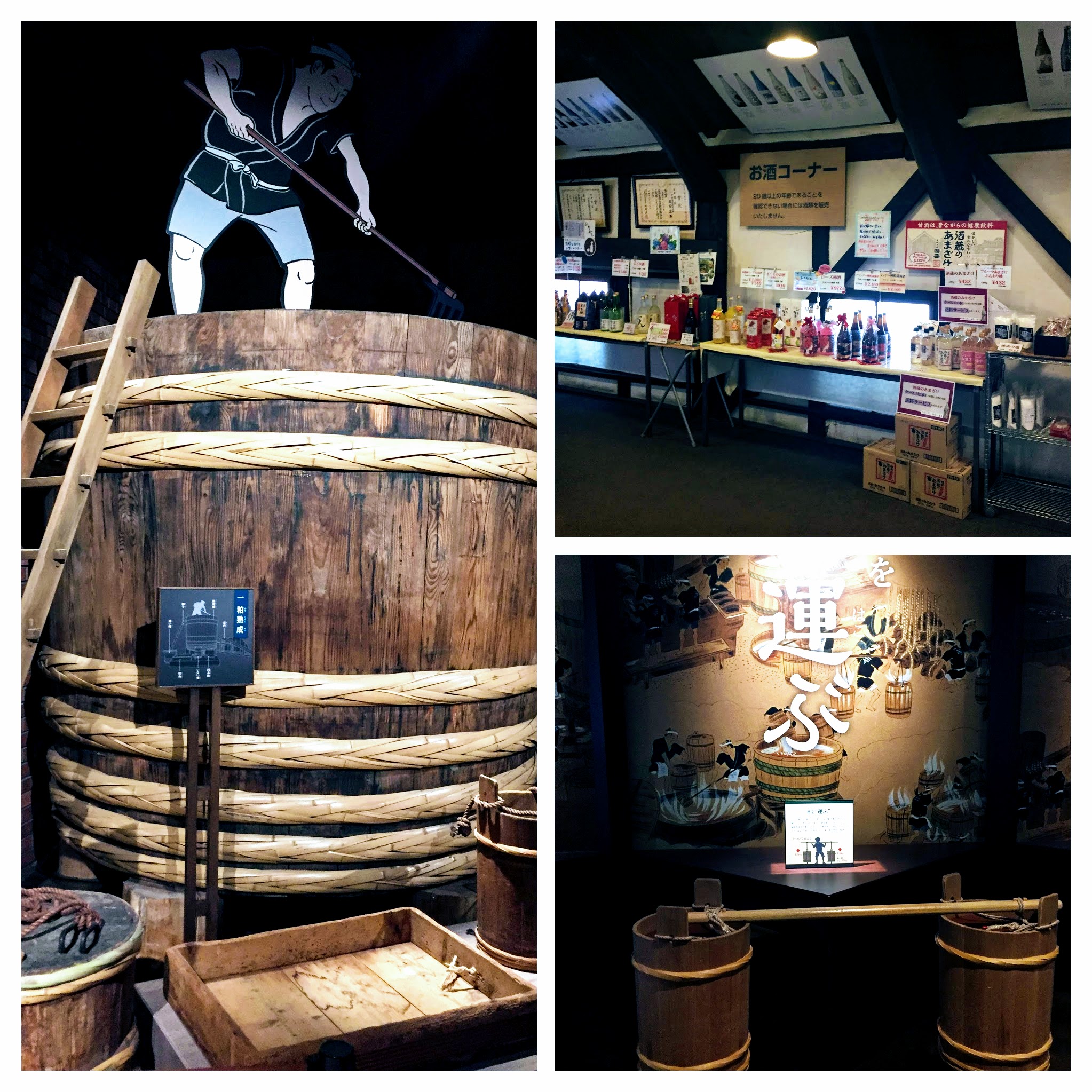
This week we went to Handa for visiting the Sake Museum and Mizkan (vinegar) Museum.
Kunizakari Sake no Bunkakan Museum was created by Nakano Sake Brewery Co., Ltd., a long-established sake brewery founded in 1844. The black building, which was used for sake brewing for 200 years, really lets you feel the history. Inside the museum there are displays of sake brewing tools, a corner where sake brewing is introduced through Japanese paper dolls, and a room in which we could taste different kind of sake, plum wine, and more.
After Sake Museum we reached Mizkan Museum situated on a canal used in the past to bring vinegar from Handa to Tokyo.
Vinegar has been a popular condiment in Japan since the 5th century. The brewing town of Handa, created vinegar as a by-product of Sake brewing. Exporting soy sauce, sake and vinegar across Japan made Handa one of the more prosperous towns during the Edo Period (1603-1868). Handa remains home to the Mizkan Company, founded in 1804, and producing vinegar to this day.
At the end of the visit we took picture for making our personal vinegar bottle label of Ajipon Sauce (a famous kind of vinegar made by Mizkan).
Kunizakari Sake no Bunkakan Museum was created by Nakano Sake Brewery Co., Ltd., a long-established sake brewery founded in 1844. The black building, which was used for sake brewing for 200 years, really lets you feel the history. Inside the museum there are displays of sake brewing tools, a corner where sake brewing is introduced through Japanese paper dolls, and a room in which we could taste different kind of sake, plum wine, and more.
After Sake Museum we reached Mizkan Museum situated on a canal used in the past to bring vinegar from Handa to Tokyo.
Vinegar has been a popular condiment in Japan since the 5th century. The brewing town of Handa, created vinegar as a by-product of Sake brewing. Exporting soy sauce, sake and vinegar across Japan made Handa one of the more prosperous towns during the Edo Period (1603-1868). Handa remains home to the Mizkan Company, founded in 1804, and producing vinegar to this day.
At the end of the visit we took picture for making our personal vinegar bottle label of Ajipon Sauce (a famous kind of vinegar made by Mizkan).
Gohei-Mochi Miso Rice Cakes Making (May 17, 2019)
Today we went to the mountainous Asuke district in Toyota city, Aichi, to make traditional miso rice cakes called gohei-mochi, a specialty in the Tokai Region of Central Japan. Even though this delicacy is called mochi, the rice used for the gohei variety is regular white rice, not the high-viscosity special mochi rice used for the more known mochi eaten during the New Year celebrations. With a little bit of peanuts and the flavorful miso paste Tokai Region is famous for, the gohei mochi are sure to win over your taste buds!
Plastic Food Samples and Gujo-Hachiman (May 10, 2019)
Japan's gourmet world would be entirely different without plastic food samples displayed in restaurant windows. On this excursion we made our own: cabbage and tempura (with shrimp or other ingredients). We then moved to Gujo-Hachiman (Gifu Prefecture) for a stroll in this old and charming little town. The town is famous for the Gujo-Odori, a variety of the bon dance performed in the summer. Since we went in April, it was too early to see the performance but the wonderful staff at the Gujo Odori Preservation Society showed us some basic moves, which we turned into a(n almost) professional performance!
Japanese Drums Workshop (April 26, 2019)
Japanese drums (wadaiko) are an indispensable part of Japanese musical tradition and an important element in various festivals as well as religious rites and events. For this week's Culture Practicum we went to Aratama Studio in Nagoya for a 2-hour workshop in drum playing.
Even though playing the drums did require some stamina, we had a fantastic time and the workshop was a great way to let off some of that end-of-semester steam!
Even though playing the drums did require some stamina, we had a fantastic time and the workshop was a great way to let off some of that end-of-semester steam!
Nagahama City and Kaiyodo Figure Museum (April 19, 2019)
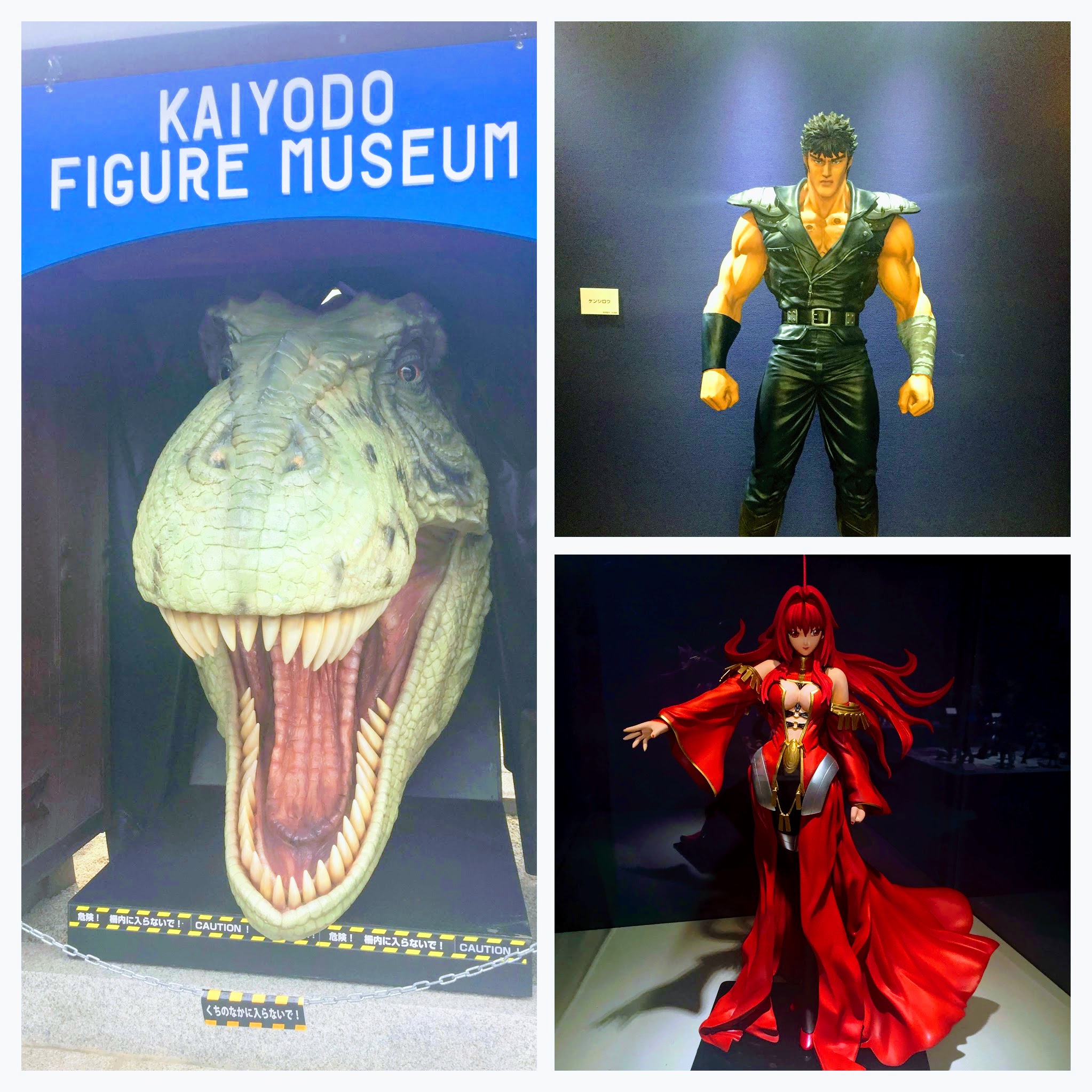
This week we went to Nagahama, a small city near Biwa Lake in Shiga Prefecture.
And there we had the chance to visit the Action Figure Museum; Anime and Manga enthusiasts know well what A F are but maybe they don’t know that these figures are not only representations of Anime or Manga characters but they also reproduce animals, insects, everyday life objects, vehicles etc.
Nagahama is also famous for its glass workshop situated in a Western style building built as a bank in 1900; the building is named kurakabe ginkou because of its black walls, and now inside we could find all kind of objects made in glass, from jewelry to plates and glasses.
And there we had the chance to visit the Action Figure Museum; Anime and Manga enthusiasts know well what A F are but maybe they don’t know that these figures are not only representations of Anime or Manga characters but they also reproduce animals, insects, everyday life objects, vehicles etc.
Nagahama is also famous for its glass workshop situated in a Western style building built as a bank in 1900; the building is named kurakabe ginkou because of its black walls, and now inside we could find all kind of objects made in glass, from jewelry to plates and glasses.
Shirakawa Village and Wada House (April 12, 2019)
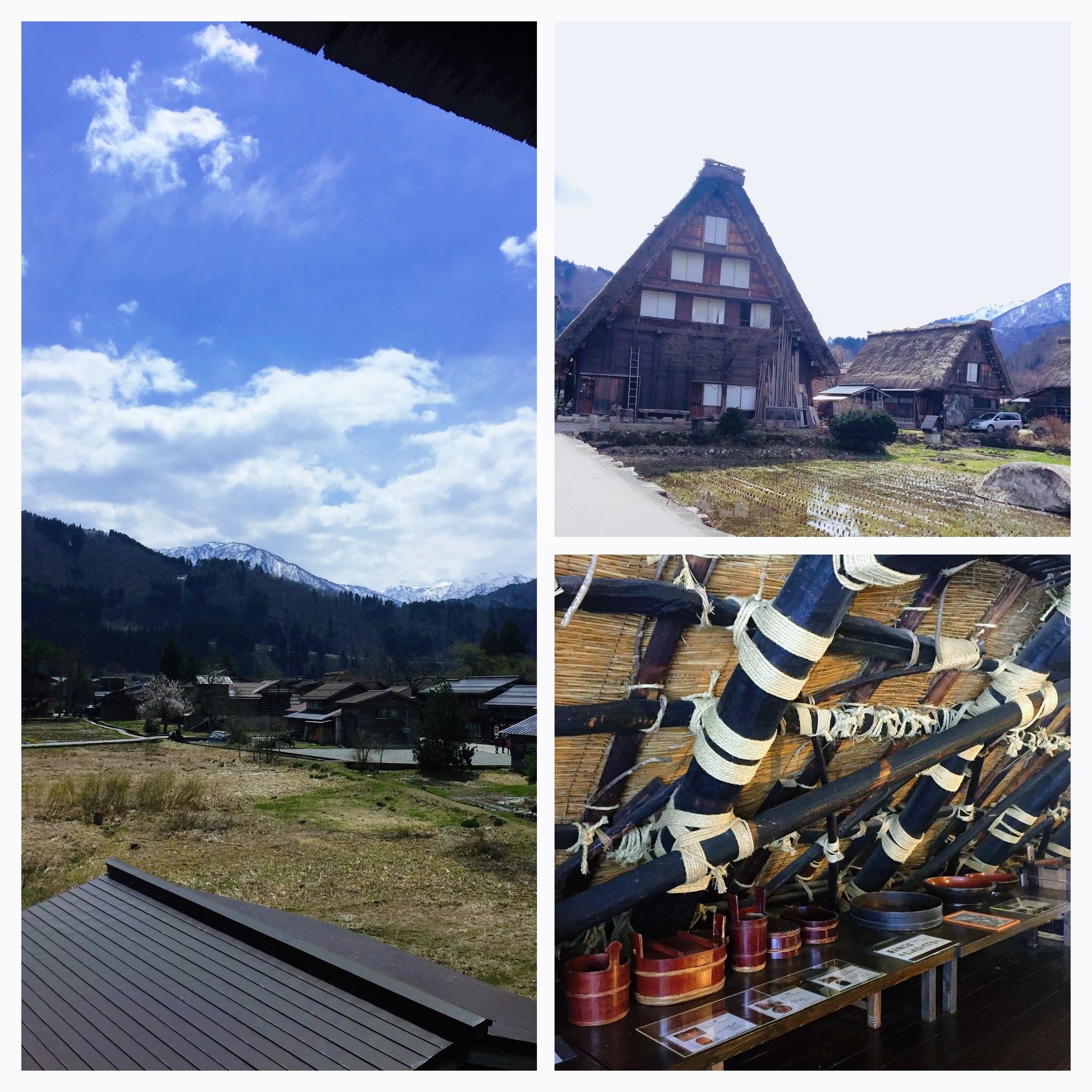
The first excursion of Spring semester took us to Shirakawa-go a very peculiar village located in Gifu Prefecture. Shirakawa-go has been designated as World Heritage by UNESCO in 1995 and is a village characterized by the “Gassho style” houses (hands in prayer), a very specific method of construction which doesn’t include the use of any metal materials (e.g. nails).
The Gassho style houses were built by binding beams with the only use of ropes. The shape the roof has been thought to resist snow weight of the region harsh winters. Inside this houses were carried out activities such as silkworm cultivation and gunpowder manufacturing.
We also had the chance to visit Wada House, the biggest and oldest house of the area, belonging, still now, to Wada family that used to be one of the families heading the village from Edo Period.
The Gassho style houses were built by binding beams with the only use of ropes. The shape the roof has been thought to resist snow weight of the region harsh winters. Inside this houses were carried out activities such as silkworm cultivation and gunpowder manufacturing.
We also had the chance to visit Wada House, the biggest and oldest house of the area, belonging, still now, to Wada family that used to be one of the families heading the village from Edo Period.
Mini Tatami Making Workshop (November 2, 2018)
If you've ever been to, or seen, a traditional Japanese home you know that tatami are an indispensable part of it. Do you know, though, about the mythological background of tatami mats? Legend has it, the god of the sea - Umisachihiko - had a beautiful daughter, and when another deity - Yamasachihiko - saw her, he fell in love at first sight. The news made Umisachihiko very happy and to honor Yamasachihiko he had him sit on a beautiful tatami. This manifestation of the utmost respect and courtesy to one's guest is a crucial part of Japanese hospitality to this day.
With this in mind, we embarked on a mission to make our own - mini! - tatami mats, which can be used as flower vase stands or as picture frames. Even though the size of our mats was much smaller than the ones used for flooring in homes, it was still quite a challenging task to make them right. We don't mean to brag, but the effect was pretty neat!
With this in mind, we embarked on a mission to make our own - mini! - tatami mats, which can be used as flower vase stands or as picture frames. Even though the size of our mats was much smaller than the ones used for flooring in homes, it was still quite a challenging task to make them right. We don't mean to brag, but the effect was pretty neat!
Zen Meditation (October 19, 2018)
For this week's practicum we went to the university next door, Aichi Gakuin University, to practice some Zen meditation under the supervision of Buddhist monks at the University's Institute for Zen Studies. After getting some introduction into the Buddhist practice of meditation and the basic philosophy behind it, we spent some quality time with our own consciousness. Interestingly, Zen mediation gave rise to mindfulness mediation increasingly popular in the West.
Japanese paper-making workshop (October 12, 2018)
Japanese paper (washi) is well known for its high quality and durability despite its thinness. For this culture practicum we went to Mino City in Gifu Prefecture, one of the famous centers for Japanese paper making. After learning about the history of paper-making, the raw materials used and the production process of washi, we embarked on the mission to making our own washi sheets adorned with Japanese maple leaves. Making even one sheet of washi paper was quite a challenge, even though the craftsmen and women helping us made it look easy. The effect, we dare say, was pretty good though!
Toyokawa Inari Shrine and "Chikuwa" Fish-Stick Making (May 18, 2018)
Even though the most famous of the Inari shrines is located in Kyoto (Fushimi Inari Shrine), they are located in different parts of Japan. One of the more known ones, is right here in Aichi Prefecture, the Toyokawa Inari Shrine. For this week's practicum we visited the shrine with its many fox statues, after which we moved on to try our hands at making the local delicacy, the "chikuwa" fish-sticks.


